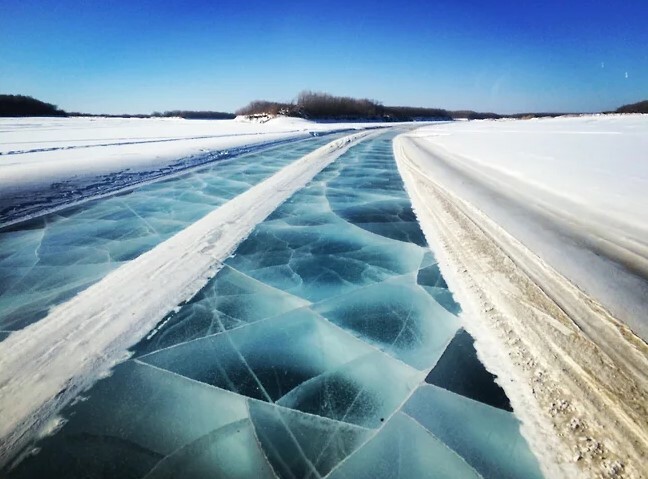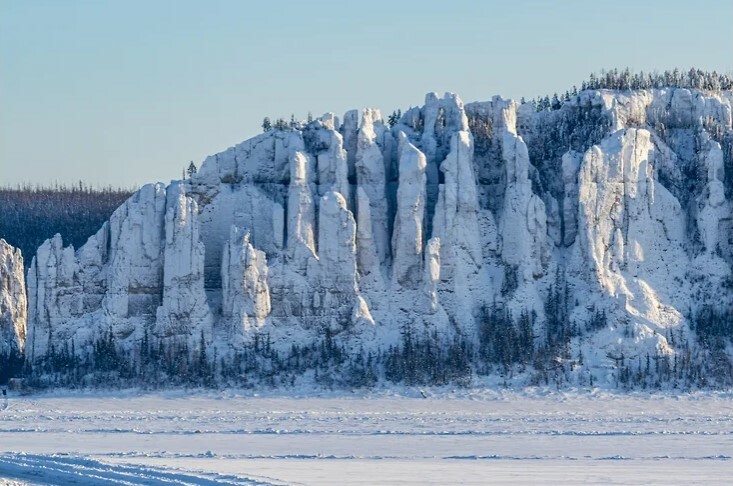Since the foundation was launched in Moscow, the works of Yakut artists have been shown as part of the blazar young art fair, and a bilingual portal www.ayarkut.com has been launched which not only tells about AyarKut projects, but also being a kind of guide to the world of Yakut culture and art for those who know nothing (or almost nothing) about it. The portal is planned to be regularly updated in the manner of a small media source, it will also become a platform for various online exhibitions specially prepared for it. Alexander Burenkov gave more details on AyarKut projects and its main goals to “Kommersant.Art”.
Problems, challenges, strategy
In addition to remoteness from large megacities and other regions, the main problem of Yakutia is its isolation, incredible separation from large infrastructure, which is a crucial obstacle to the development of cultural policy and cultural exchange. It becomes a big challenge to work with the material and context. Geographically, Yakutia is a difficult destination for cultural tourism, which is partly why it is a kind of symbol of global isolation, but at the same time it is also a laboratory where the problems of geocultural development of the country can be seen, where environmental problems come out. We know that the Arctic is warming much faster than other regions of the world, and exactly in Yakutia consequences of deforestation or permafrost melting with a hidden threat of methane emissions can be seen.
Yakutia is forming its visual identity especially now when there is a wave of interest in Yakut film industry. In Yakut films you can see different metaphors, for example, the confrontation of man and nature, environment and human, the search for some autochthonous narratives with which you could associate yourself, instead of global ones invented in Hollywood or in Russia, all this makes Yakutia an interesting place, but at the same time it lacks visibility in the international cultural arena. The AyarKut Foundation should become a new type of media connecting Yakutia with the rest of the world, some kind of media source. Coming to exhibitions, festivals, and flying to Yakutia is expensive, difficult, and takes a long time. The import of Yakut Art is also not easy. The very idea of this logistics in the field of art is being rethought in many ways now because of the pandemic and the environmental crisis. In order to create a more stable format of the foundation, it is important to develop an online portal and formulate the very idea of the foundation as a kind of media source that contributes to the desterotypization of the image of Yakutia.
Art residencies and winter program for 2021/2022
The idea of showing the interest of Yakutia to the world has been motivating us when developing the concept of an artistic residence. Its topic continues several important directions that seem obvious for research in this region. One of them is the problem of the indigenous peoples of the North, the disappearance of their natural habitat, their traditional way of life, language, and national culture. All these problems happen due to not only social, political, economic, but also technological reasons. The focus for research in the residence will be difficult everyday life of indigenous peoples, the interpretation of ethnography and cultural heritage. Another very important area for artists to explore may be the concept of a sounding landscape with the image of an Arctic desert, which is not really deserted. It is filled with various melodies, sounds, unique musical instruments, lyrics, and rituals. It is important to destroy this image of the quietest, most abandoned non-human landscape on the planet by providing an opportunity to sound artists and musicians, to explore Yakutia, to use the advice of researchers, for example, from the Institute of Arctic Culture and Arts, the Laboratory of Geocultural Research, the collections of the Museum of Musical Instruments in the Museum of Music and Folklore of Yakutia in Yakutsk.

Photo: Getty Images
The program of this winter will be focused on the theme of auditory heritage, oral folk art, and it will be based primarily on the centuries-old tradition of Olonkho: storytellers used to gather in winter dwellings of Sakha peoples and would talk about the epic for several hours. We have come up with a program called "Quiet Voices", which will explore new forms of narrative, various auditory properties of the culture of small nations, interpretation of oral folk art and a look at modern ethnography from the perspective of sound. The heroic epic of Olonkho concentrates the soul of the Yakut people in it - the idea of time and the world, a synthesized mythological religious worldview. This distinctive mythology of the Yakut people is reflected in the work of many Yakut artists who are looking for thematic connections, stylistic techniques, and creative principles in the epic. In recent years, a variety of forms of collectivity and auditory perception of the world, oral communication with each other at a distance have appeared, which reveal the potential of the voice in a new way. But first of all, it is important for us to emphasize the idea of research, which concerns not only the voice, but also how small nations and artists working with the problem of small nations find their position in the global world, on the global art scene. The project of this winter is conceived in the format of a digital farce: throughout the season, the project's website will host video art screenings from several invited curators, show authors’ selections of videos and archival films, as well as broadcast audio performances and interpretation of Olonkho in Russian and English.
The international exhibition of contemporary art, which will be specially prepared as an online exhibition, available in Russian and English, will be part of the foundation's program. The whole project was originally conceived as bilingual, with the widest possible coverage, for those who have never heard anything about Yakutia and the Yakut culture. The whole program reflects the format of international cultural exchange and cooperation that we want to develop within the framework of the foundation. It would be wrong to say that the foundation will support only Yakut art: there is almost no Yakut contemporary art sphere, its entire landscape is represented by individual names, as many Yakuts live abroad. Therefore, we are talking about the development of the very infrastructure of contemporary art in Yakutia, about cross-cultural projects and international cooperation, which is unthinkable without working with other artists from Russia and from around the world. All projects will coexist exactly in this logic.
From the festival in Yakutsk to the exhibition in Athens
In 2022, a large environmentally oriented festival will take place, which will be held in Yakutsk itself. This will be the first major event of the foundation in the capital of Yakutia. In addition, we are planning to open a small exhibition of contemporary art in two cities, Moscow and Athens. P.E.T Projects was chosen as the Greek venue, which is handled by the artist Angelo Plessis, who exhibited at various times at Documenta, the Kwangzhui Biennale. In recent years, he has been creating projects that combine collective performances, art residencies, and educational initiatives of art communities. He has always been interested in the topic of spirituality, as well as techno-shamanism. We are building an exhibition around the latter, where foreign, Russian and Yakut artists will participate. The project should turn out to be quite bright and will be included in the city's artistic life.
By Alexander Shchurenkov
Source: Kommersant.ru
